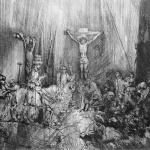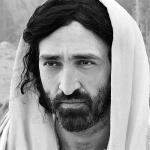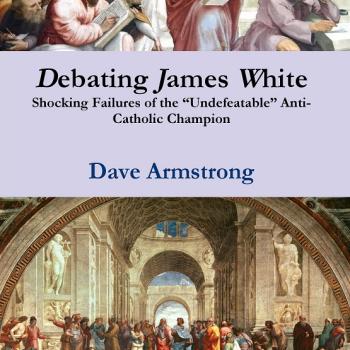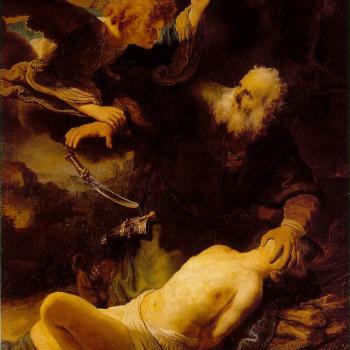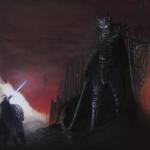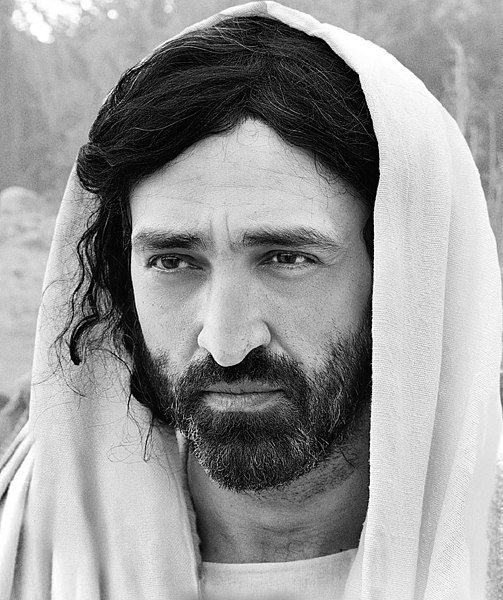
Michael J. Alter is the author of the copiously researched, 913-page volume, The Resurrection: a Critical Inquiry (2015). I initially offered 59 “brief” replies to as many alleged New Testament contradictions (March 2021). We later engaged in amiable correspondence and decided to enter into a major ongoing dialogue about his book. He graciously sent me a PDF file of it, free of charge, for my review, and has committed himself to counter-response as well: a very rare trait these days. All of this is, I think, mightily impressive.
Mike describes himself as “of the Jewish faith” but is quick to point out that labels are often “misleading” and “divisive” (I agree to a large extent). He continues to be influenced by, for example, “Reformed, Conservative, Orthodox, and Chabad” variants of Judaism and learns “from those of other faiths, the secular, the non-theists, etc.” Fair enough. I have a great many influences, too, am very ecumenical, and am a great admirer of Judaism, as I told Michael in a combox comment on my blog.
He says his book “can be described as Jewish apologetics” and one that provides reasons for “why members of the Jewish community should not convert to Christianity.” I will be writing many critiques of the book and we’ll be engaging in ongoing discussion for likely a long time. I’m quite excited about it and eagerly enjoy the dialogue and debate. This is a rare opportunity these days and I am most grateful for Mike’s willingness to interact, minus any personal hostility.
I use RSV for all Bible verses that I cite. His words will be in blue.
*****
Alter wrote:
CONTRADICTION #20 The Forsaking of the Disciples
The synoptic narratives reports differing details of those present at Jesus’s crucifixion and the actions they took. In Mark 14:50, none of the apostles are described as being present during Jesus’s crucifixion: “And they all forsook him, and fled.” (p. 166)
That passage has nothing to do with the crucifixion, but rather with the arrest of Jesus (14:41-50). It refers to their forsaking of him at that particular moment. But what could they have done, anyway? They were supposed to engage in a brawl with “a crowd with swords and clubs” (14:43)? They simply didn’t want to be arrested. It was a perfectly human and understandable reaction. They couldn’t prevent Jesus from being arrested, but (whether rightly or wrongly) they could prevent it happening to themselves. But to repeat: this tells us nothing whatsoever about whether any of them were at the crucifixion. So it’s an irrelevant and wrongheaded use of a Bible passage.
Matthew 26:56 also reports that all the disciples had deserted their Master at the time of Jesus’s arrest. (p. 166)
Yes, precisely as in Mark 14:50; neither passage has anything to do with witnessing firsthand the crucifixion of Jesus.
Luke 23:48 reports: “And all the people that came together to that sight, beholding the things which were done, smote their breasts, and returned.” Then, in verse 48 [should be 49], he adds: “And all his acquaintance, and the women that followed him from Galilee, stood afar off, beholding these things.” Significantly, Luke fails to identify these acquaintances. Consequently, it is impossible to determine if any of these acquaintances were his disciples. (p. 166)
That’s correct.
A contradiction exists, given that Luke’s acquaintances include any of the disciples. (p. 166)
It does not. “All” is often not used literally in Scripture (the same happens in English; e.g., “all of Detroit came out to greet the world champion Detroit Pistons”). “All his acquaintance” in this context simply means, “lots of his acquaintances.” The non-literality is clear in verse 48 as well. Are we to believe that every single person without exception went away, beating their breasts? Of course not. Luke 23:48 is a general, proverbial statement, to the effect of saying: “the general consensus is that the witnesses who were there went away grieving.” Because “smoting one’s breast” was one Hebrew expression of grief (see, e.g., Nah 2:7), that visual depiction was used.
If someone doesn’t want to take my word (often my critics don’t!), I can provide several examples of such things in Scripture, and the authority of linguistic Bible sources. I did so, in one of my articles published at National Catholic Register:
The word for “all” . . . in Greek (pas) [the word in Lk 23:49 rendered “all”] can indeed have different meanings: as it does in English. It matters not if it means literally “every single one” in some places, if it can mean something less than “absolutely every” elsewhere in Scripture. . . .
In verse 1:29 [of Romans] the KJV has the phrase, “being filled with all unrighteousness,” whereas RSV adopts the more particular, specific meaning, “all manner of wickedness.” . . . in 15:14, Paul describes members of the Roman church as “filled with all knowledge” (cf. 1 Cor 1:5 in KJV), which clearly cannot be taken literally. Examples could be multiplied indefinitely, and are as accessible as the nearest Strong’s Concordance. . . .
Kittel’s Theological Dictionary of the New Testament (Abridged Ed.) states:
Pas can have different meanings according to its different uses . . . in many verses, pas is used in the NT simply to denote a great number, e.g., “all Jerusalem” in Mt 2:3 and “all the sick” in 4:24. (pp. 796-797)
See also Matthew 3:5; 21:10; 27:25; Mark 2:13; 9:15; etc., especially in KJV.
Likewise, Thayer’s Greek-English Lexicon of the New Testament gives “of every kind” as a possible meaning in some contexts (p. 491, Strong’s word #3956). And Vine’s Expository Dictionary of New Testament Words tells us it can mean “every kind or variety.” (vol. 1, p. 46, under “All”). . . .
We see Jewish idiom and hyperbole in passages of similar meaning. Jesus says: “No one is good but God alone” (Lk 18:19; cf. Mt 19:17). Yet He also said: “The good person brings good things out of a good treasure.” (Mt 12:35; cf. 5:45; 7:17-20; 22:10). Furthermore, in each instance in Matthew and Luke above of the English “good” the Greek word is the same: agatho.
Is this a contradiction? Of course not. Jesus is merely drawing a contrast between our righteousness and God’s, but He doesn’t deny that we can be “good” in a lesser sense. We observe the same dynamic in the Psalms:
Psalm 14:2-3 The LORD looks down from heaven upon the children of men, to see if there are any that act wisely, that seek after God. [3] They have all gone astray, they are all alike corrupt; there is none that does good, [Hebrew, tob] no not one. (cf. 53:1-3; Paul cites this in Rom 3:10-12)
Yet in the immediately preceding Psalm, David proclaims, “I have trusted in thy steadfast love” (13:5), which certainly is “seeking” after God! And in the very next he refers to “He who walk blamelessly, and does what is right” (15:2). Even two verses later (14:5) he writes that “God is with the generation of the righteous.” So obviously his lament in 14:2-3 is an indignant hyperbole and not intended as a literal utterance.
Such remarks are common to Hebrew poetic idiom. The anonymous psalmist in 112:5-6 refers to the “righteous” (Heb. tob), as does the book of Proverbs repeatedly: using the words “righteous” or “good” (11:23; 12:2; 13:22; 14:14, 19), using the same word, tob, which appears in Psalm 14:2-3. References to righteous men are innumerable (e.g., Job 17:9; 22:19; Ps 5:12; 32:11; 34:15; 37:16, 32; Mt 9:13; 13:17; 25:37, 46; Rom 5:19; Heb 11:4; Jas 5:16; 1 Pet 3:12; 4:18, etc.). . . .The key in all this is to understand biblical language properly in context. It’s not always literal.
That is, Luke is known to have been highly dependent upon Mark and Matthew. Yet Luke seemingly rejects something reported by Mark and Matthew. Why then would Luke change such an important fact? (p. 166)
It’s a non-issue once the common non-literal use of “all” (pas in Greek in the NT) is understood. The problem with a lot of Bible critics is that they lack a basic understanding of different biblical genres (not to mention ancient Hebrew culture) and the over 200 non-literal figures of speech that are commonly used. I’ve seen this scores and scores of times among atheist biblical “exegetes” (whom I have refuted a few hundred times). They interpret the Bible in a woodenly literal manner that is very typical of relatively uneducated fundamentalist Protestants. In many cases, they actually were from that background, by their own report. So I have to get them up to speed in their biblical exegesis (a term very loosely applied in their case) and hermeneutics by informing them of the basic, elementary principles of those endeavors.
An even greater contradiction appears in John. (p. 166)
It’s not contradictory at all, as explained above. The Synoptics never claimed that no disciple was present at the cross. And the use of “all his acquaintance” was clearly non-literal in context.
Contrary to the synoptic Gospels, John had at least one disciple present during Jesus’s crucifixion, the disciple “whom he loved.”
Jn 19:25 Now there stood by the cross of Jesus his mother, and his mother’s sister, Mary the wife of Cleophas, and Mary Magdalene.
Jn 19:26 When Jesus therefore saw his mother, and the disciple standing by, whom he loved, he saith unto his mother, Woman, behold thy son!
Jn 19:27 Then saith he to the disciple, Behold thy mother! And from that hour that disciple took her unto his own home.
Not only is he the only disciple identified as being present during the Crucifixion, but Jesus also carried on a conversation with him and directed him to care for his mother! In effect, John’s narrative reads like a completely different story from the synoptic accounts. (p. 166)
As in all these alleged “contradictions,” what is happening is a consistent, non-contradictory complementarity of texts. The same occurs here. Almost all Christian commentators believe that John was the sole disciple at the cross. But there were also several “women who had followed him from Galilee” (Lk 23:49) and His mother. These included Mary Magdalene, who was His first follower (male or female) to see Him risen again. So He was not “forsaken” at the cross by all of His disciples, nor all of His larger group of “followers.” Nor does any text claim that He was. The women in His circle proved themselves more courageous than the men (which is so often the case in general life). I think that is one reason Jesus chose to first appear after His Resurrection to a woman: a little bit of pointed divine sense of humor . . .
But all the disciples save again for John, and Judas, died horrible deaths as martyrs; so in the long run they indeed proved themselves loyal, heroic, and obedient followers of Jesus, who went out and “turned the world upside down.”
In conclusion, given that Luke’s acquaintances included his disciples, Luke and John (John states that at least one disciple was at the cross during Jesus’s crucifixion) directly contradicts Mark and Matthew. However, if Luke’s “acquaintances” did not include the disciples, now there is a contradiction between John and all of the synoptic Gospels. (p. 167)
None of this is established at all, as just demonstrated.
***
Photo credit: Selva Rasalingam as Jesus in the The Gospel of Luke (2016, Netflix USA) [Wikimedia Commons / Creative Commons CC0 1.0 Universal Public Domain Dedication]
Summary: Michael Alter argues that the NT contradicts itself regarding “disciples forsaking Jesus” & those present at the cross. I refute his arguments by logic & explanation of Hebrew non-literal idiom.
Tags: alleged Bible contradictions, alleged Resurrection contradictions, Bible “contradictions”, Bible “difficulties”, Bible Only, biblical inspiration, biblical prooftexts, biblical skeptics, biblical theology, exegesis, hermeneutics, Holy Bible, inerrancy, infallibility, Jewish anti-Christian polemics, Jewish apologetics, Jewish critique of Christianity, Jewish-Christian discussion, Michael J. Alter, New Testament, New Testament critics, New Testament skepticism, Resurrection “Contradictions”, Resurrection of Jesus, The Resurrection: A Critical Inquiry, disciples forsaking Jesus


